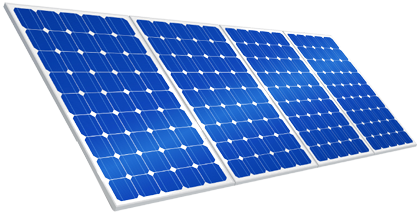The India has immense solar energy potential, with parts of it receiving as much as 4-7 kWh per sq. meter per day. Solar power comes across as an option to bridge the ever increasing gap between the demand and supply of energy, since the dependency on finite fossil fuel needs to be brought down. Further the usage of fossil fuel poses a significant threat to the environment and if not checked will severely affect the climate. To address these issues, the Prime Minister of India released the National Action Plan for Climate Change (NAPCC) in 2008 under which is the prestigious Jawaharlal Nehru National Solar Mission (JNNSM) which aimed at setting up 22 GW of solar power by 2020 in a phased manner. The NAPCC also envisages the electricity regulatory commissions in the country to purchase a percentage of the total grid based power from renewable sources setting an obligation on the electricity commissions called Renewable Purchase Obligation (RPO).
To further support the mission, states like Gujarat, Rajasthan, Karnataka, Tamil Nadu, Andhra Pradesh came out with their individual state policies to fulfill their RPOs/SPOs promoting large-scale deployment of solar power plants. Simultaneously Central Electricity Regulatory Commission (CERC) introduced Renewable Energy Certificates (REC) mechanism for Solar Energy, which allowed obligated entities to meet its obligation by purchasing the RECs.
India has come a long way since 2008 and aims to shift a significant part of its energy requirement to renewable sources. While technological advancement in the solar space is reducing the cost of generation, the government is taking significant strides in improving the transmission infrastructure and providing incentives like waiver of Electricity Duty, Wheeling and Transmission charges, Cross Subsidy Charges etc. to attract interest. Accelerated Depreciation (AD) benefit under Income Tax Act being the most important of them, has managed to draw a lot of investors to develop green power where Developers can claim up to 80% Depreciation on their solar power investments in the first year.
However the high component cost and lack of space is the major hindrance to the development. Various roof top schemes have been proposed addressing the concern of space shortage. Subsidies are announced by State and Central Government to increase the usage of solar power at individual levels. The government is also taking a lot of initiatives in setting up micro grids to electrify remote areas through solar power.
Overall a cleaner environment is the need of the hour and India with the immense potential of harnessing the abundant available natural resources is poised to emerge as the leader in renewable energy installations. Solar photovoltaic technology with the ease of set up and hassle free operations is fast covering grounds to take us closer to the ambitious target set under the JNNSM.
BENEFITS OF ROOFTOP SOLAR:
1)- Solar Energy’s reduced operating cost,2)- You can Save up to 65% to 70% on your electricity bills
3)- It’s a Good return on investments & we can also claim Up to 30% accelerated depreciation on tax benefit
4)- 25year performance warranty on solar panels which ensures peace of mind
5)- Power Independence
6)- we can use of unutilized land/roof
7)- It can Operate in all the areas
8)- Negligible maintenance - Compliance with CRS policies &have a very positive impact on the bottom-line & even greater impact on the environment.
Solar Market Segmentation Diagram :-









